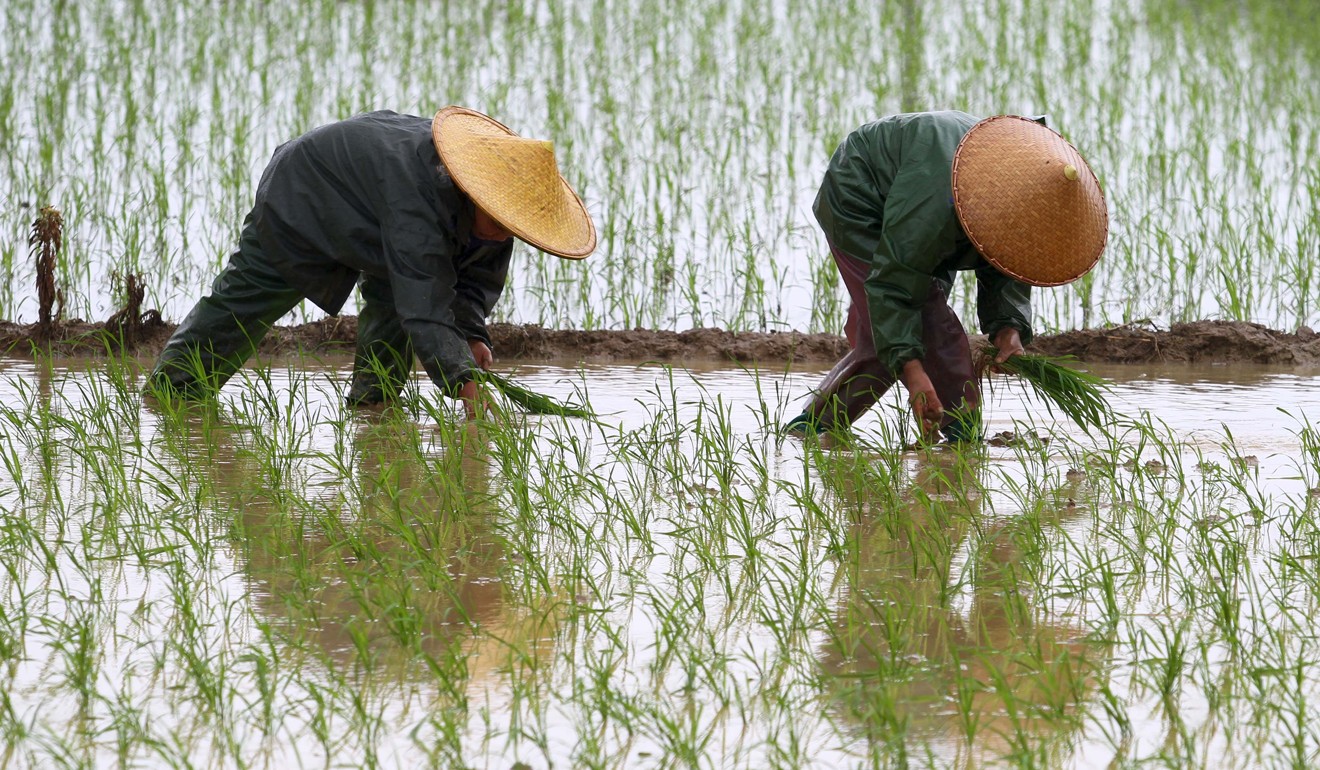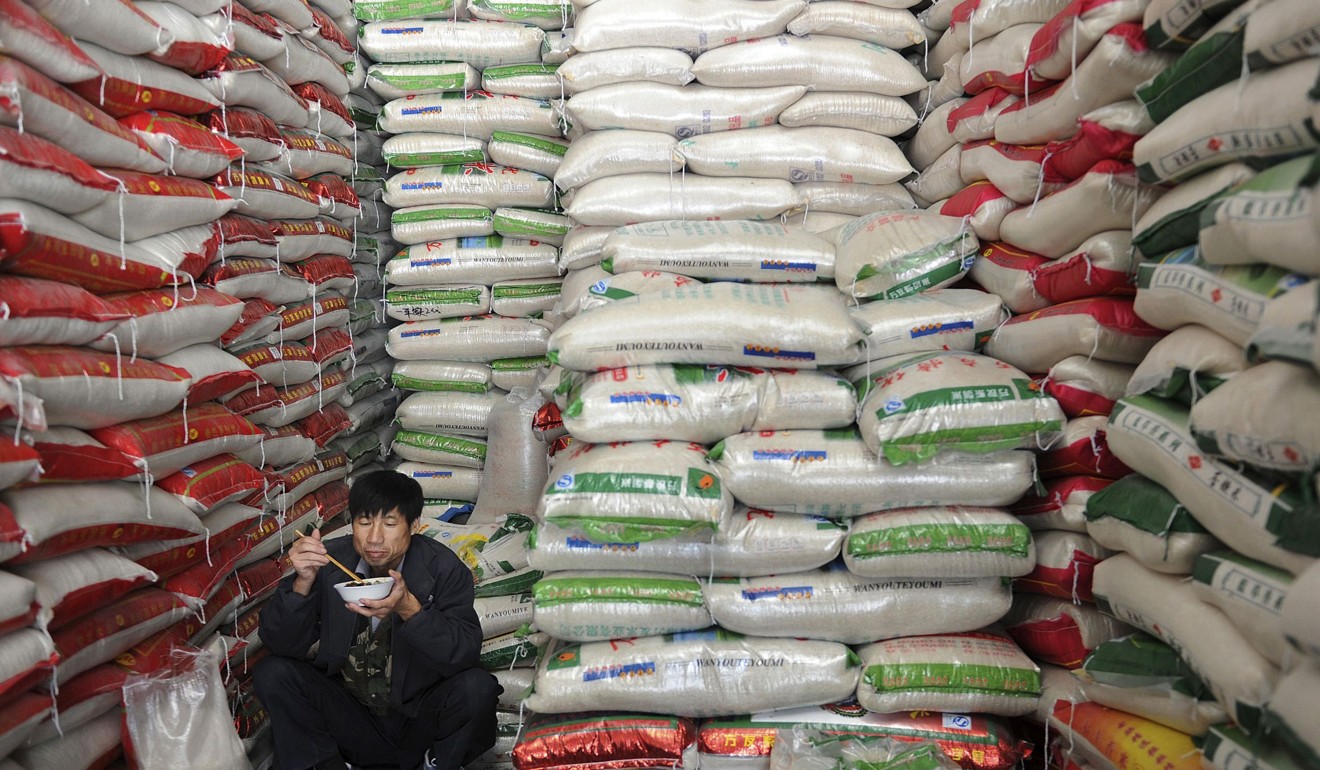
The million-dollar question in China’s relentless academic paper chase
Researchers’ US$2 million reward for their study published in top international journal sparks debate over China’s cash-for-papers policy
It’s the gold standard of scientific research and late last month a team at Sichuan Agricultural University finally achieved it – publication of a study in one of the world’s leading peer-reviewed journals.
The team, led by Professor Chen Xuewei, discovered a genetic variant in rice that could help the crop resist rice blast, a fungus that cuts the country’s output by about 3 million tonnes a year. Since the gene occurs naturally in rice, the researchers found that existing species could be tweaked safely and quickly to acquire the trait, passing it on to future generations.
The team wrote up the study and submitted it to US -based Cell, which published the paper on June 30.

But it was the publication – rather than the research itself – that prompted the university to give Chen’s team a 13 million yuan (HK$ 15 million) reward, the biggest ever to a Chinese team for a paper in an international journal.
The university said most of the money would go to Chen’s laboratory as research funds over five years. The team members would also receive 500,000 yuan in cash.
Like other tertiary institutions around the country, Sichuan Agricultural University offers the rewards to its staff as part of a broader push to foster excellence and research on a par with the best in the world.
But news of the amount handed out for the Cell citation has revived debate over China’s “cult-like” paper chase and the rewards that go along with it.
Chinese researchers produce more than a million papers a year, more than any other country, according to the China Association for Science and Technology.
About a third of the papers were published in overseas journals but most were poor in quality with few or no citations.
The quality of the research is reflected in the overall citation rate, or how much the studies are referred to by other researchers. For Chinese papers, the rate is below the global average, according to People’s Daily .
To raise that standard, universities and research institutions offer prize money to scientists who have their work accepted by top-flight journals.

Rao Yi, a Peking University neurobiologist who is among the most outspoken scientists on academic corruption in China, said there was a popular belief in the country that a scientist’s performance should be judged by the number of papers he or she publishes in Cell, Nature and Science.
“This is a cult,” Rao wrote on his blog on Sciencenet.cn, the largest online scientific community on the mainland in 2013.
“Excessively worshipping some journals and ignoring the content [of papers] will lead to a crisis sooner or later.”
Critics say the financial rewards and the official stress put on publishing research risks turning scientists into “paper machines”, possibly tempting some to risk their academic reputations by engaging in unethical practices such as fudging data.
In April, Springer Nature, a major international scientific publisher, retracted 107 research papers by Chinese authors after discovering malpractice in the peer review process.
The papers’ authors supplied the journal editors with counterfeited contact information for third-party reviewers. Some authors were therefore “reviewing” their own work. It was the single largest withdrawal of academic papers in history.
But there are also those who support the award to Chen’s team.
“They deserve the money,” said Liang Chengzhi, a rice scientist who directs the genetic analysis platform at the Chinese Academy of Sciences’ Institute of Genetics and Development Biology. Liang, who was not involved in the research said rice blast was the biggest threat to rice production today.
The disease has plagued China for thousands of years but outbreaks are also reported every year in more than 80 countries around the globe.
“The money means Chen and his team will have sufficient and stable financial resources to continue their research for years to come,” Liang said.
“This is particularly important to fundamental research, [since it] can take a very long time [with] research in the laboratory and in the field to make a new discovery.”
Chen could not be immediately reached for comment. A staff member in his laboratory said the professor was “happy” with the award and its arrangement.

“Professor Chen continues his work as usual. I can see no difference in him since receiving the award,” said the researcher, who asked not to be named.
But last week The Beijing News quoted Chen as saying that negative comments about the money had put some pressure on him and the rest of the team.
“In the past I could reduce pressure by running, but now my health is not as good as before, so I tried forget it in the swimming pool,” he was quoted as saying. “I hope more attention will be paid to our discovery than the money.”
Chen is not the only scientist to receive an award for publishing high quality research in top international journals. In 2006, China Agricultural University gave two scientists who published a paper in Cell and Nature 1 million yuan each.
Unesco said last year that China’s research and development spending was growing at an “astonishing” rate of 18.3 per cent annually, while across other upper-middle-income countries R&D spending averaged just 1.4 cent. Each year, the world’s second-largest economy pours 2 per cent of its gross domestic product into the R&D sector. A big share of the spending is to increase the income of researchers.

But as the controversy over the reward sum shows, the debate over China’s obsession with academic publishing and generously rewarding papers that make it into prestigious journals isn’t going away any time soon.
Nevertheless, perhaps mainland universities could take a leaf out of the playbook of a leading institution in the United States to focus its best scientific minds on breakthrough work. At the University of California, Berkeley, Nobel laureates of all stripes get something even more valuable than mere cash – they get a parking space on the main campus.

